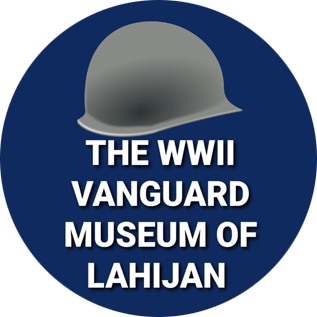
The Persian Gulf Command was a United States Army service command established in December 1943 to assure the supply of U.S. lend-lease war material to the Soviet Union. Its history originated in September 1941, when the U.S. Military Iranian Mission.
Lend-Lease
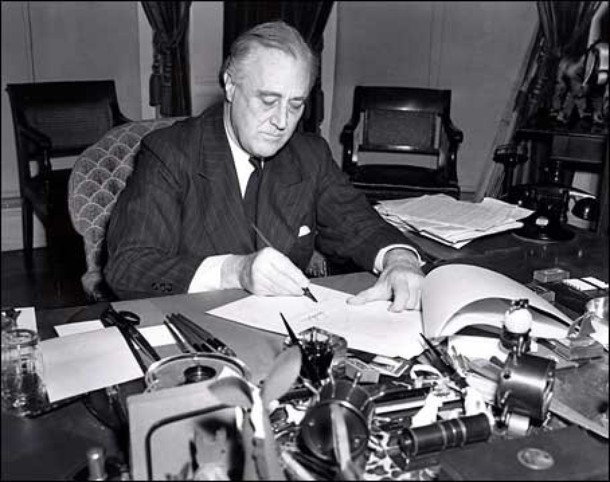
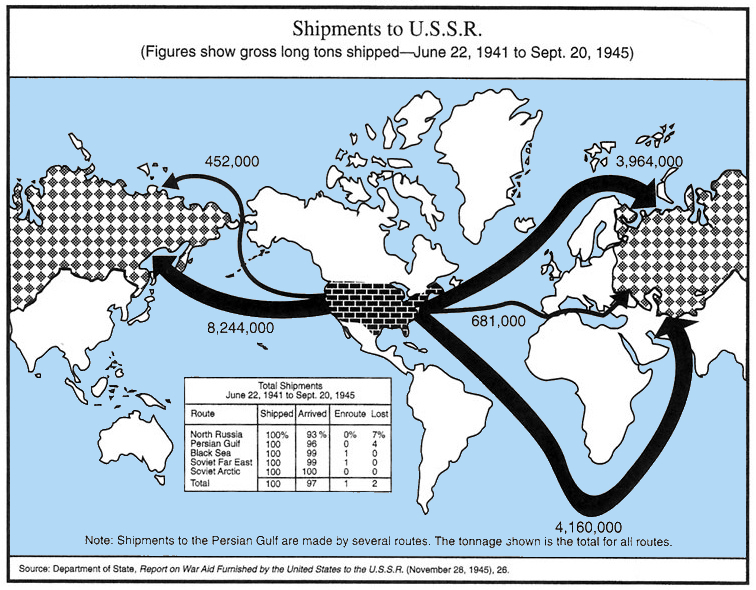
On March 11, 1941, President Roosevelt signed the Lend-Lease Bill into law. formally the Lend-Lease Act and introduced as An Act to Promote the Defense of the United States. It was a policy under which the United States supplied the United Kingdom, the Soviet Union, France, Republic of China, and other Allied nations with food, oil, and materiel between 1941 and 1945. The aid was given free of charge on the basis that such help was essential for the defense of the United States.The Lend-Lease Act was signed into law on March 11, 1941, and ended on September 20, 1945. A total of $50.1 billion (equivalent to $773 billion in 2022 when accounting for inflation) worth of supplies was shipped, or 17% of the total war expenditures of the U.S.In all, $31.4 billion went to the United Kingdom, $11.3 billion to the Soviet Union, $3.2 billion to France, $1.6 billion to China, and the remaining $2.6 billion to other Allies. Roosevelt’s top foreign policy advisor Harry Hopkins had effective control over Lend-Lease, making sure it was in alignment with Roosevelt’s foreign policy goals.Materiel delivered under the act was supplied at no cost, to be used until returned or destroyed. In practice, most equipment was destroyed, although some hardware (such as ships) was returned after the war. Supplies that arrived after the termination date were sold to the United Kingdom at a large discount for £1.075 billion, using long-term loans from the United States, which were finally repaid in 2006. Similarly, the Soviet Union repaid $722 million in 1971, with the remainder of the debt written off. Roosevelt made sure that Lend-Lease policies were supportive of his foreign policy goals by putting his top aide Harry Hopkins in effective control of the program. In terms of administration, the president established the Office of Lend-Lease Administration during 1941, headed by steel executive Edward R. Stettinius.
Operation Barbarossa

The German invasion of the Soviet Union (Operation Barbarossa), was the code name of the attack of the Wehrmacht and some of its allies in the Axis forces on the Soviet Union during World War II, which began as the largest and most extensive military attack in history on Sunday, June 22, 1941. . The German General plan
was acquiring the oil reserves of the Caucasus as well as the agricultural resources of various Soviet territories, including Ukraine and Byelorussia. Their ultimate goal was to create more Lebensraum (living space) for Germany, and the eventual extermination of the native Slavic peoples by mass deportation to Siberia, Germanisation, enslavement, and genocide. Over the course of the operation, over 3.8 million personnel of the Axis powers—the largest invasion force in the history of warfare—invaded the western Soviet Union along a 2,900-kilometer (1,800 mi) front, with 600,000 motor vehicles and over 600,000 horses for non-combat operations.
The Anglo-Soviet Invasion of Iran

The Anglo-Soviet invasion of Iran or Anglo-Soviet invasion of Persia was the joint invasion of the neutral Imperial State of Iran by the United Kingdom and the Soviet Union in August 1941. The two powers announced that they would stay until six months after the end of the war with their enemy Nazi Germany (World War II), which turned out to be 2 March 1946. On that date the British began to withdraw, but the Soviet Union delayed until May, citing “threats to Soviet securityThe invasion, code name Operation Countenance, was largely unopposed by the numerically and technologically outmatched Iranian forces. The multi-pronged coordinated invasion took place along Iran’s borders with the Kingdom of Iraq, Azerbaijan SSR, and Turkmen SSR, with fighting beginning on 25 August and ending on 31 August when the Iranian government formally agreed to surrender, having already agreed to a ceasefire on 30 August. The invasion took place two months after the Axis invasion of the Soviet Union and the Soviet Union’s subsequent alliance with the United Kingdom. The attack also took place less than two months after Allied victories over pro-Axis forces in neighbouring Iraq and French Syria and Lebanon. The invasion’s strategic purpose was to ensure the safety of Allied supply lines to the USSR (see the Persian Corridor), secure Iranian oil fields, limit German influence in Iran (Reza Shah had leveraged Germany to offset the British and Soviet spheres of influence on Iran) and preempt a possible Axis advance from Turkey through Iran toward the Baku oil fields or British India. Following the invasion, on 16 September 1941 Reza Shah abdicated and was forced into exile by the invading British. He was replaced by his young son Mohammad Reza Pahlavi.
The Persian Gulf Command
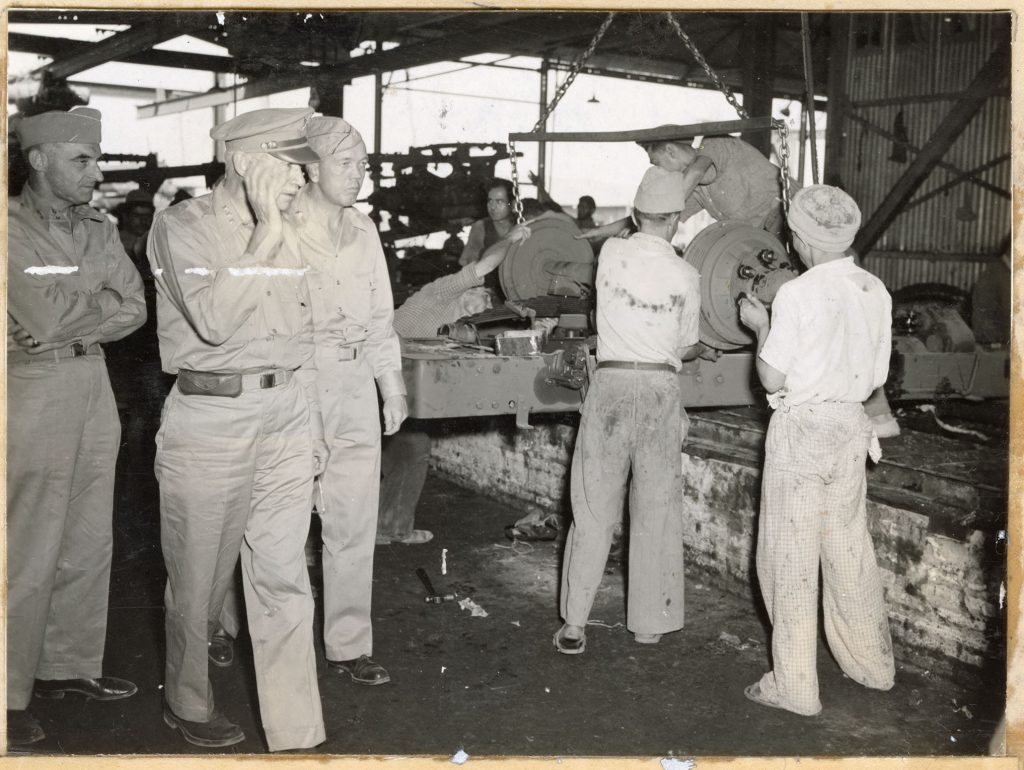
The Persian Gulf Command was a United States Army service command established in December 1943 to facilitate the supply of US lend-lease war material to the Soviet Union, through the “Persian Corridor”.The command originated in September 1941, when the US Military Iranian Mission, led by Colonel Raymond A. Wheeler (US Army Corps of Engineers) was established. At this same time, the Iranian District of the North Atlantic Division was set up to provide construction support. In August 1942 the mission was re-designated as the Persian Gulf Service Command, and in December 1943 became the Persian Gulf Command. It subsequently came under the command of a succession of engineer generals. Following the War Department’s full militarization of construction, the Iranian District ceased to exist in May 1943. Three districts directly subordinate to the area command eventually replaced it. Eventually thousands of personnel worked in Iraq as well. Iran was already occupied by British and Soviet troops who were guarding the oil fields and monitoring the pro-German Iranians (Persians). Adolf Hitler believed that German military forces could eventually take possession of the oil fields and the railroad that went through the mountains from the Persian Gulf to the Russian border. Conditions in Persia were foreign and inhospitable to the U.S. forces, with hotter temperatures than they had trained for. Those who arrived in the summer of 1942 met with pouring rain and mud more than a foot deep, but had to pitch tents to sleep on the ground for the next six months until huts were built. The rainy season was followed by temperatures that rose as high as 100 degrees f (37 c) , accompanied by sand storms that lasted for up to a week, constantly changing the landscape. Between 1942 and 1945, the United States equipped Soviet Union with 192,000 trucks and thousands of aircraft, combat vehicles, tanks, weapons, ammunition and petroleum products. Before the construction of the aircraft assembly plant at Abadan, Iran, the United States Army Air Forces flew A-20 medium bombers across the Atlantic to Abadan, where they were turned over to Russian flyers. Army engineers transformed the camel paths into a highway for trucks and improved the railroad with its more than 200 tunnels so trains could carry tanks and tons of other heavy equipment over the mountains. Historian David Glantz has concluded that U.S. and British lend-lease assisted Soviet victory on the Eastern Front, but was not a critical factor, commenting that “left to themselves, the Soviets might have taken 12 to 18 months longer to defeat the Wehrmacht”. The Command, in conjunction with the British Tenth Army[citation needed] and Soviet troops, also provided security for the Teheran Conference in the fall of 1943, the meeting of United States President Franklin D. Roosevelt, British Prime Minister Winston Churchill, and Soviet Premier Joseph Stalin. Allied troops across the country were on alert to protect the leaders, and British, Soviet and American troops together prevented an alleged German assassination attempt at the conference. The PGC shoulder sleeve insignia featured a green shield, 31⁄4 inches high, with a 7 pointed white star above a red scimitar fimbriated in white bendwise, point up.

The Persian Gulf Command was a United States Army service command established in December 1943 to facilitate the supply of US lend-lease war material to the Soviet Union, through the “Persian Corridor”.The command originated in September 1941, when the US Military Iranian Mission, led by Colonel Raymond A. Wheeler (US Army Corps of Engineers) was established. At this same time, the Iranian District of the North Atlantic Division was set up to provide construction support. In August 1942 the mission was re-designated as the Persian Gulf Service Command, and in December 1943 became the Persian Gulf Command. It subsequently came under the command of a succession of engineer generals. Following the War Department’s full militarization of construction, the Iranian District ceased to exist in May 1943. Three districts directly subordinate to the area command eventually replaced it. Eventually thousands of personnel worked in Iraq as well. Iran was already occupied by British and Soviet troops who were guarding the oil fields and monitoring the pro-German Iranians (Persians). Adolf Hitler believed that German military forces could eventually take possession of the oil fields and the railroad that went through the mountains from the Persian Gulf to the Russian border. Conditions in Persia were foreign and inhospitable to the U.S. forces, with hotter temperatures than they had trained for. Those who arrived in the summer of 1942 met with pouring rain and mud more than a foot deep, but had to pitch tents to sleep on the ground for the next six months until huts were built. The rainy season was followed by temperatures that rose as high as 100 degrees f (37 c) , accompanied by sand storms that lasted for up to a week, constantly changing the landscape. Between 1942 and 1945, the United States equipped Soviet Union with 192,000 trucks and thousands of aircraft, combat vehicles, tanks, weapons, ammunition and petroleum products. Before the construction of the aircraft assembly plant at Abadan, Iran, the United States Army Air Forces flew A-20 medium bombers across the Atlantic to Abadan, where they were turned over to Russian flyers. Army engineers transformed the camel paths into a highway for trucks and improved the railroad with its more than 200 tunnels so trains could carry tanks and tons of other heavy equipment over the mountains. Historian David Glantz has concluded that U.S. and British lend-lease assisted Soviet victory on the Eastern Front, but was not a critical factor, commenting that “left to themselves, the Soviets might have taken 12 to 18 months longer to defeat the Wehrmacht”. The Command, in conjunction with the British Tenth Army[citation needed] and Soviet troops, also provided security for the Teheran Conference in the fall of 1943, the meeting of United States President Franklin D. Roosevelt, British Prime Minister Winston Churchill, and Soviet Premier Joseph Stalin. Allied troops across the country were on alert to protect the leaders, and British, Soviet and American troops together prevented an alleged German assassination attempt at the conference. The PGC shoulder sleeve insignia featured a green shield, 31⁄4 inches high, with a 7 pointed white star above a red scimitar fimbriated in white bendwise, point up. The red scimitar, from the flag of Iran represented the warlike spirit of the ancient Persians. The white seven pointed star is taken from the flag of the Kingdom of Iraq, and represents purity and the religion of the Middle East. The green color of the shield denotes the agriculture of Persia in antiquity, and also stands for Islam, the religion of both Iran and Iraq. The colors red, green and white are found in the flags of both countries. The date of the insignia’s original approval is not recorded in the Institute of Heraldry files. Correspondence dated 13 May 1944 indicates the insignia drawing may be declassified. The unclassified drawing was approved on 29 August 1944. Commanders Col. Donald Shingler, August 1942 – October 1942. Brig. Gen. Donald H. Connolly, 1942–1944. Donald Prentice Booth, January 1945 until inactivation.

Persian Gulf Command map showing the position of posts and stations.
Photo from U.S army Corps of Engineers Digital Library

The Chief. [Maj. Gen. Donald H. Connolly in uniform with a pipe in front of an airplane].
At the Office [Portrait of Stanley Scott]. [Image of Scott in Uniform].
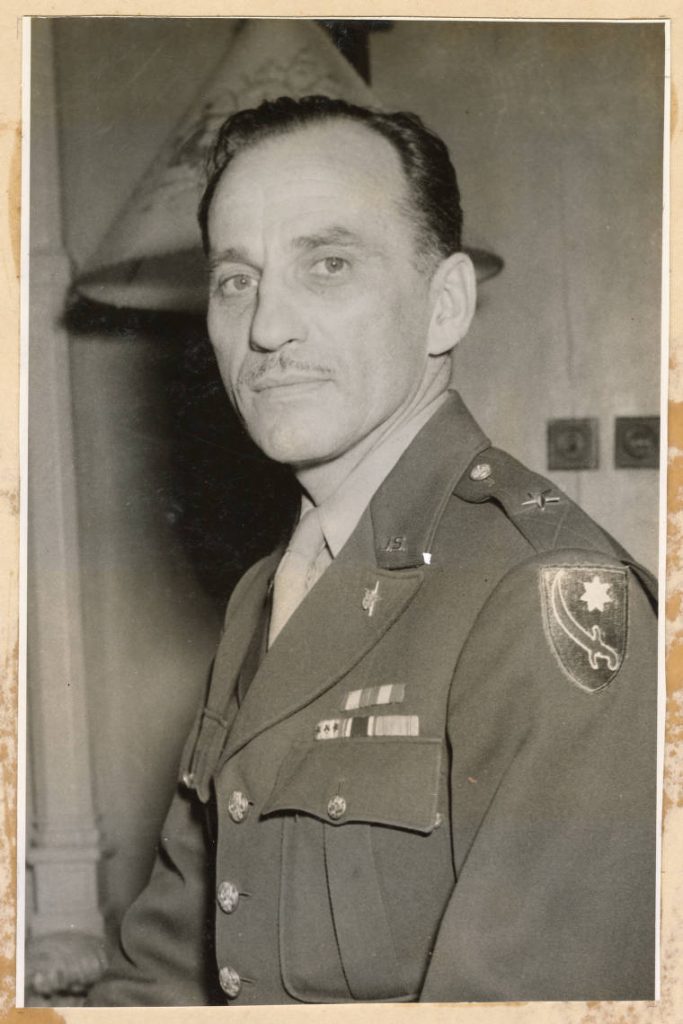
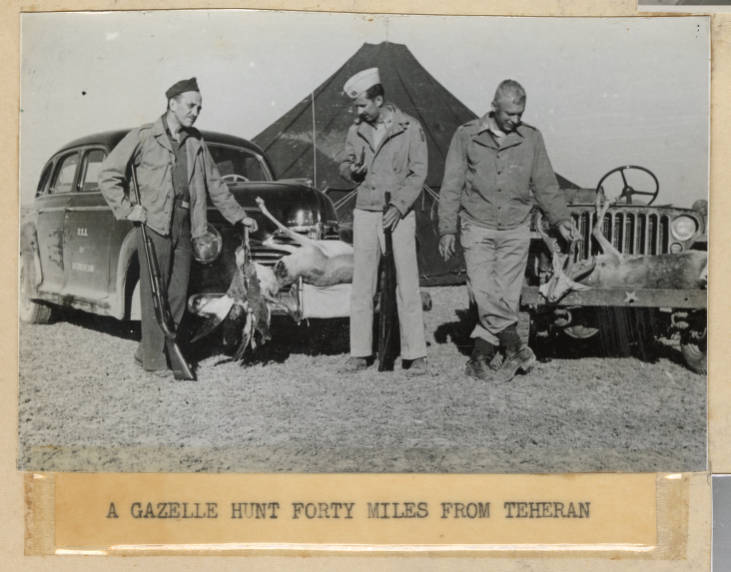
A gazelle hunt forty miles from Tehran. [Image of Scott and two men standing in front of vehicles with weapons and hunted game].
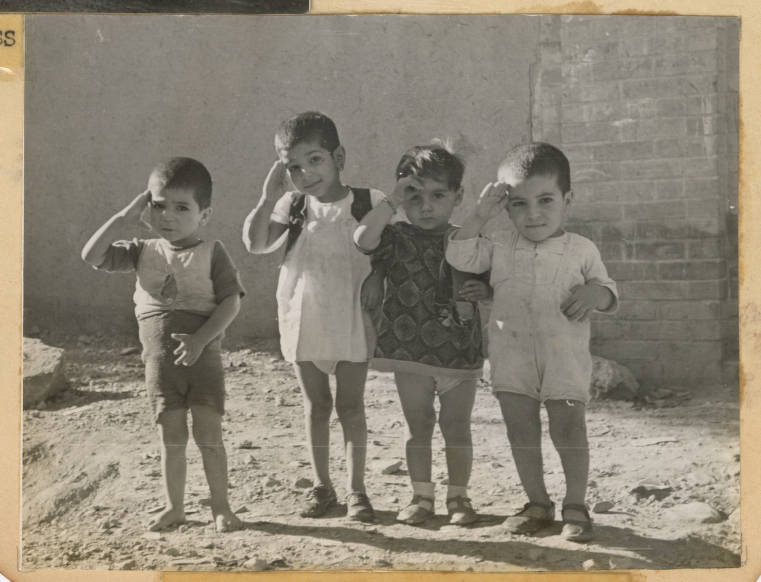
Our Quarters: Persian children who live at the entrance to General’s Mess. They salute as the American officers pass.
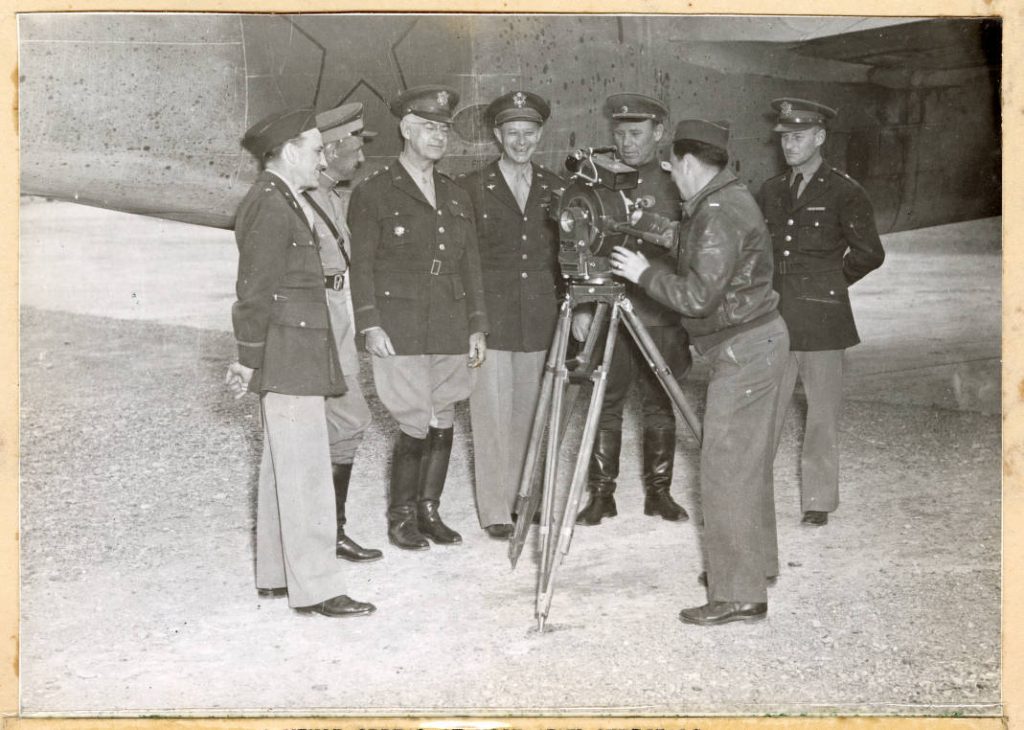
A Minor Ordeal of High Army Officials. Brig Gen S. L. Scott, Gen Ivan I. Obrazkov (Chief, USSR Air Force) Maj Gen D. H. Connolly, Col C.P. Porter, Maj Gen Anatoli N. Korolyov, (USSR) Brig Gen Don G. Shingler, are “ordered” to pose before a U.S. plane bearing the Red Star, the –th [sic] plane transferred to the USSR Army by PGSC at an unnamed airport in Persia.

View from the old office window [Street view of Tehran, Iran as seen from above].
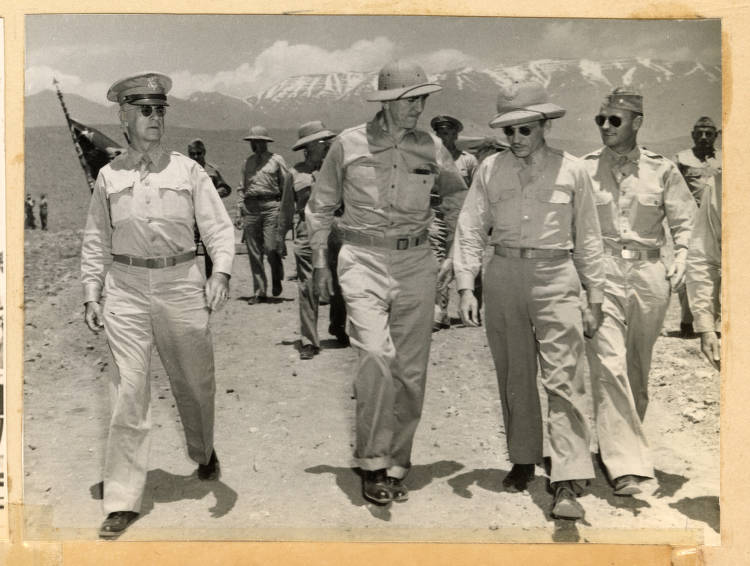
Maj Gen D H Connolly, Eddie Rickenbacker, Brig Gen S L Scott, Brig Gen Don H Shingler [walking with mountains in background].
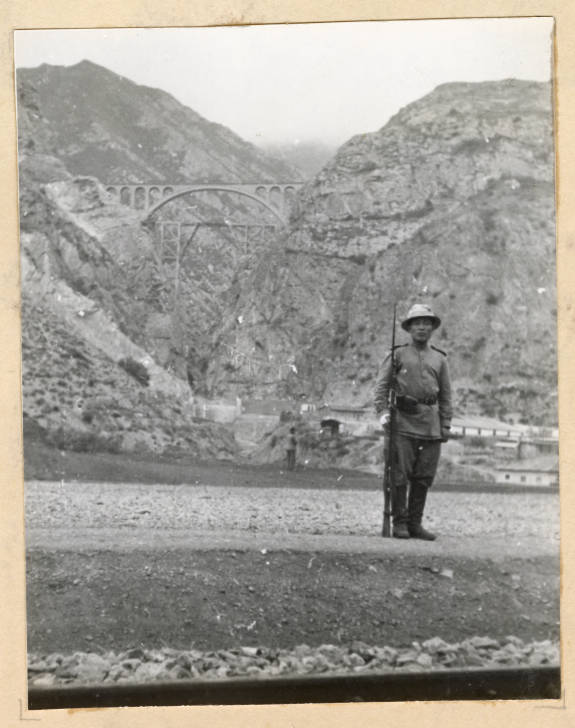
Soviet Solider standing at attention on a road, with a bridge between a mountain pass in the background.

Welcome to Iran. Maj Gen D H Connolly greets His Excellency, The Most Reverend Francis J Spellman, Archbishop of the Archdiocese of New York and Military Vicar of the US Armed Forces, upon the latter’s arrival in Iran.
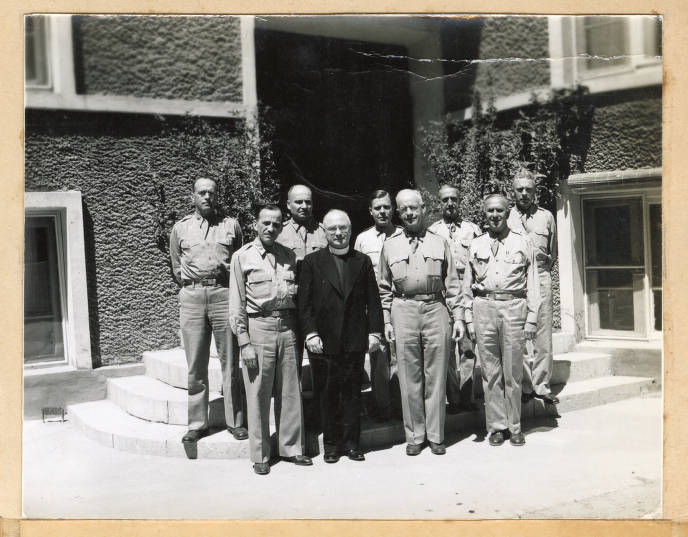
Brig Gen S L Scott, Archbishop [Francis J.] Spellman, Maj Gen D H Connolly, Col E F Brown. (Second Row) Col T M Osborne, Col Roy C L Graham, Col Paul F Yount, Col A C Purvis, Maj B K Wyatt.
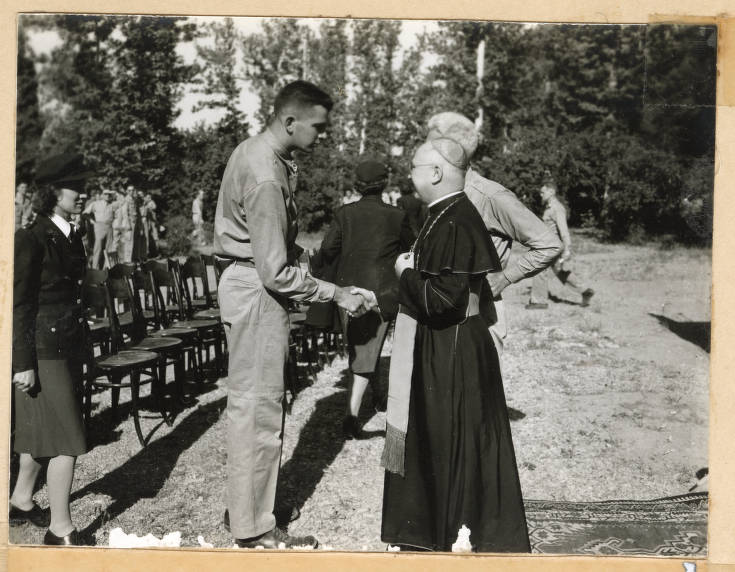
At a Field Mass held in Persia for American soldiers. Archbishop Spellman personally greets each soldier, Officer, and Nurse. The Archbishop took the names of every soldier who attended Mass and promised to write a letter to the soldier’s parents.

Archbishop Spellman delights native children in a village in Southern Persia.
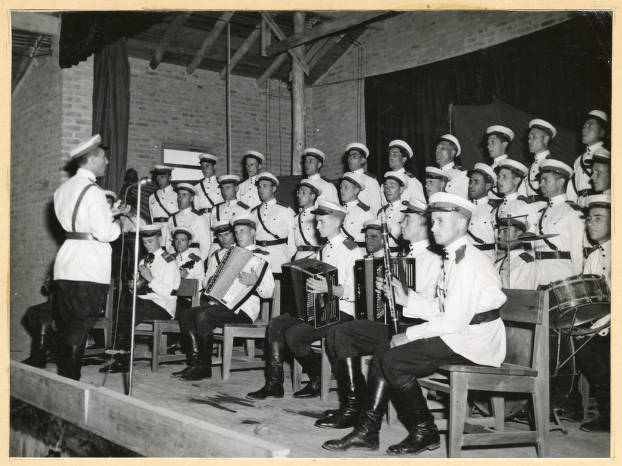
Members of a 55-strong Russian Troupe entertain U.S. Army personnel of the Persian Gulf Command. [A band and choir of men in white uniforms performing on a stage].
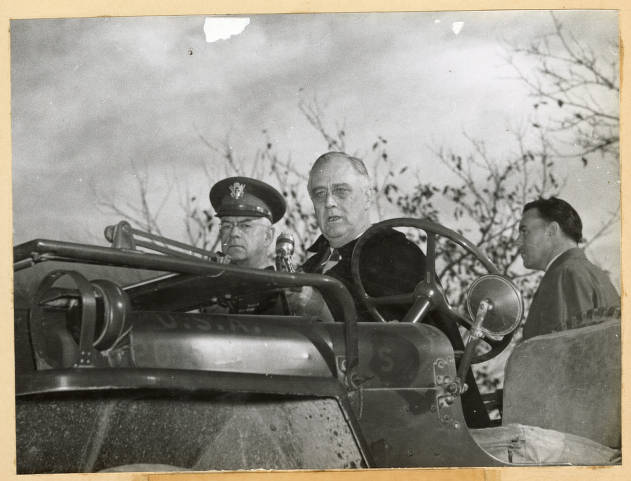
The President of the United States Franklin D. Roosevelt at Amirabad / The President and General Connolly during address [Close up of President Roosevelt and General Connolly seated in car.

The President of the United States Franklin D. Roosevelt at Amirabad / The President salutes the flag during review. [Fleet of jeeps drives beside troops standing at attention. Mountains and camp buildings in the background].
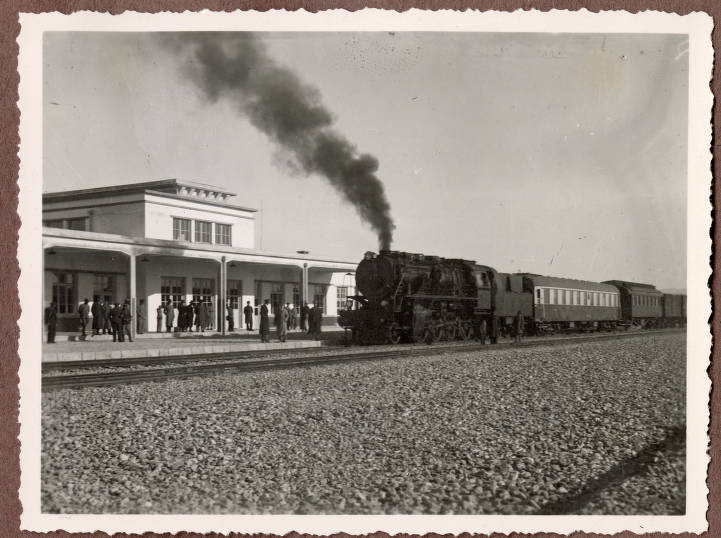
Semnan station
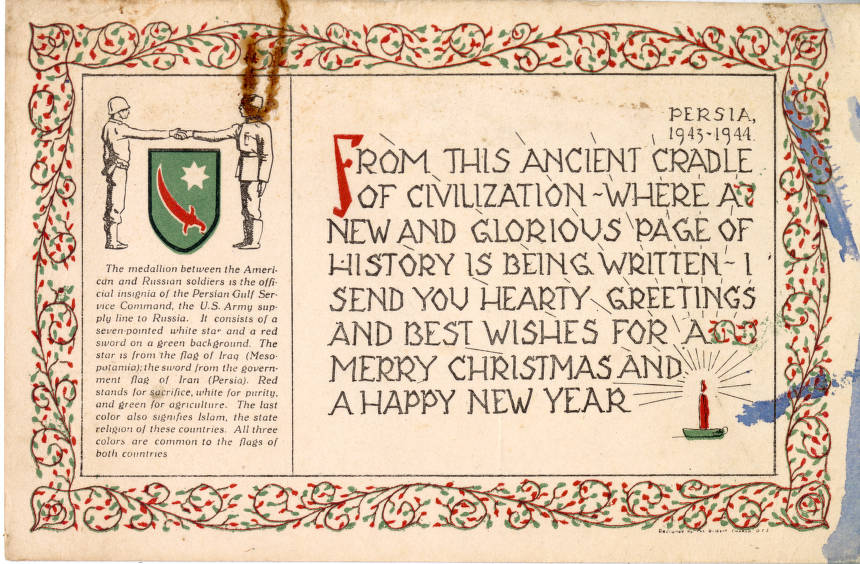
Christmas Postcard, Obverse [Holiday greeting with information about the Persian Gulf Service Command and drawing of soldiers shaking hands].
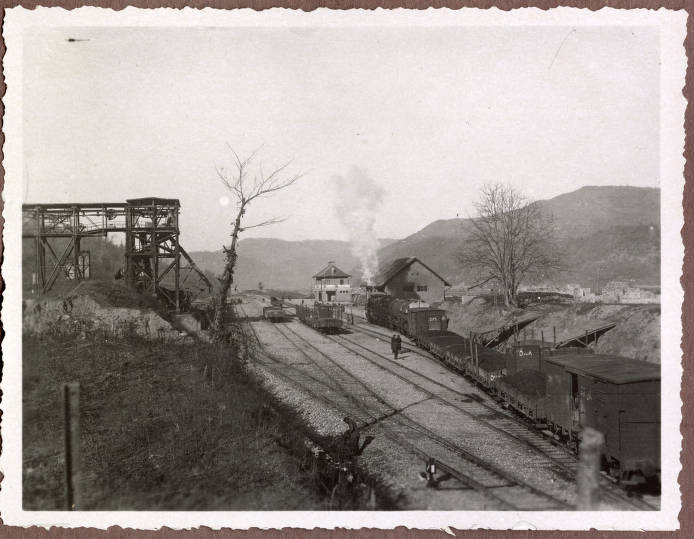
Zirab Station [Wide view of station exterior and railway with train approaching].

Shahi Station [View of station exterior from tracks].
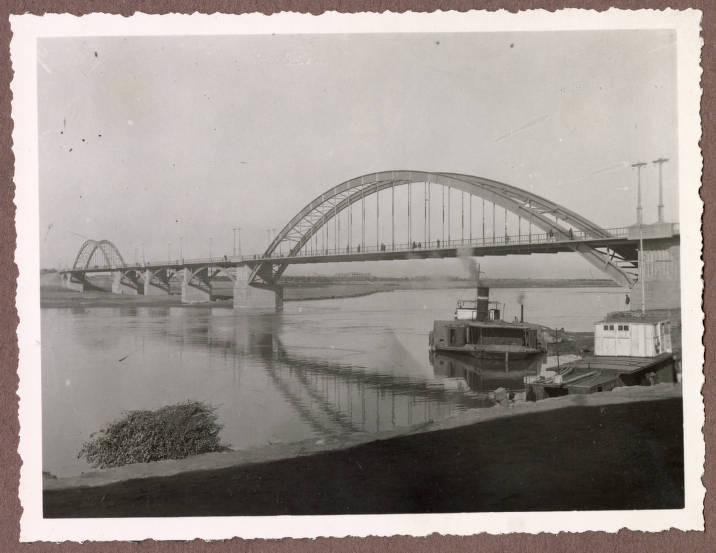
Road bridge at Ahwaz [sic] [Bridge over waterway with pedestrians crossing and boats below].
Persian Gulf Command Memorial in The WWII Museum of Lahijan

Items related to The Persian Gulf Command in our museums

US Army Sergeant in The Persia Gulf Command in Iran WW2 with an A-class coat.
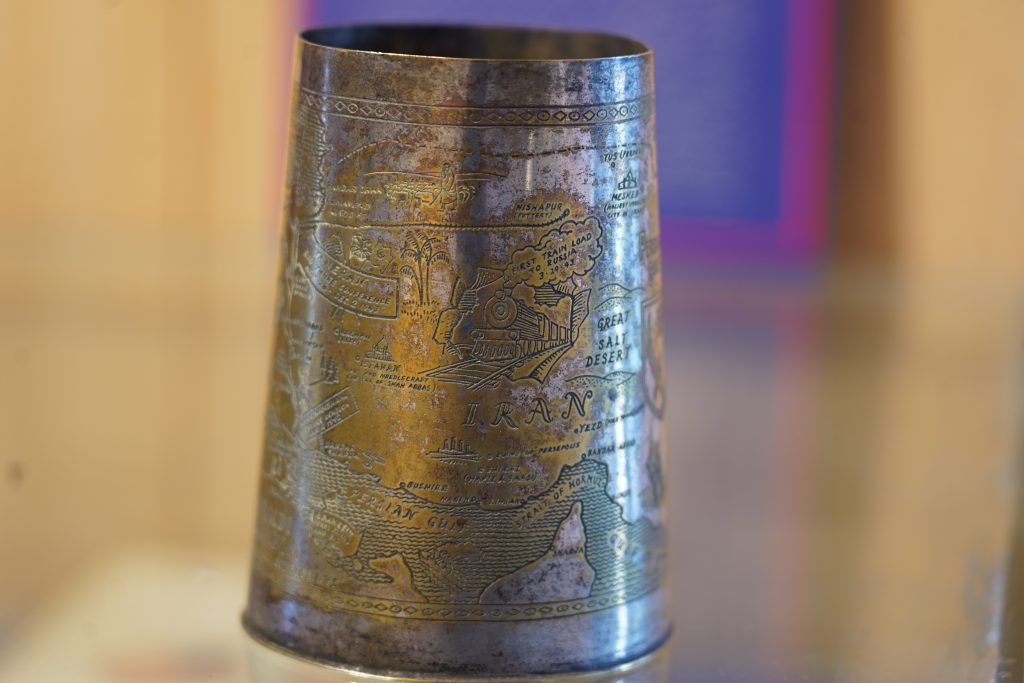
The Persian Gulf Command of the US cup with a map of Iran

